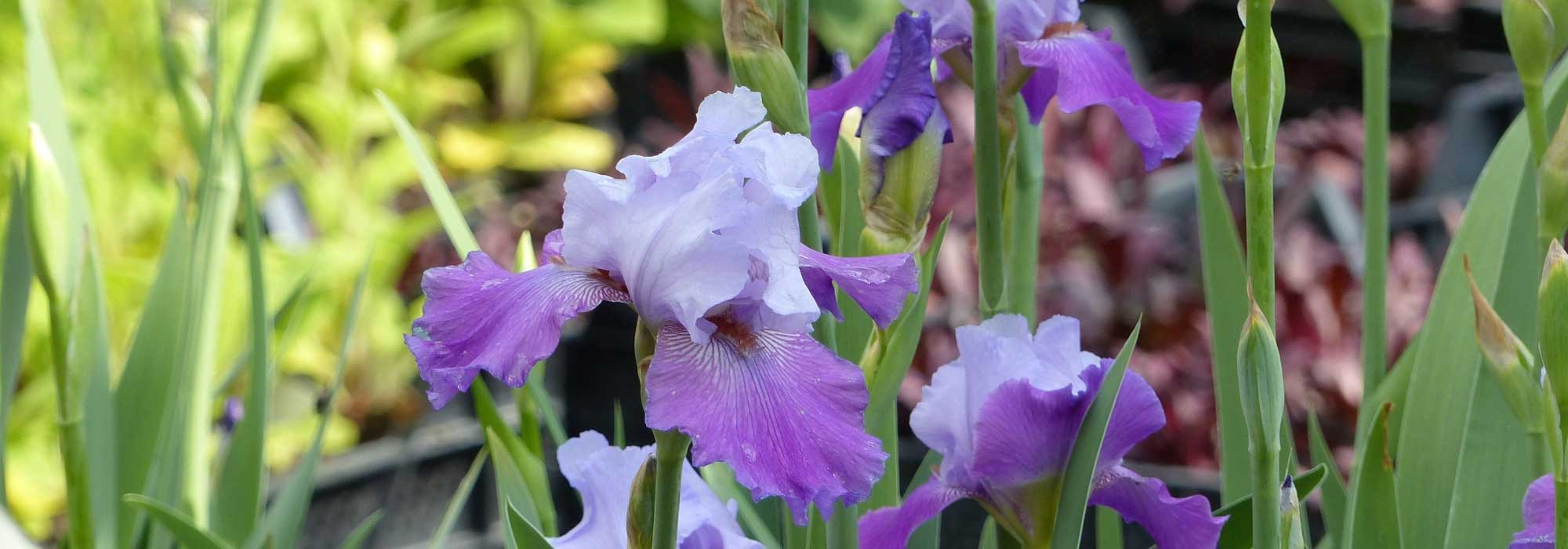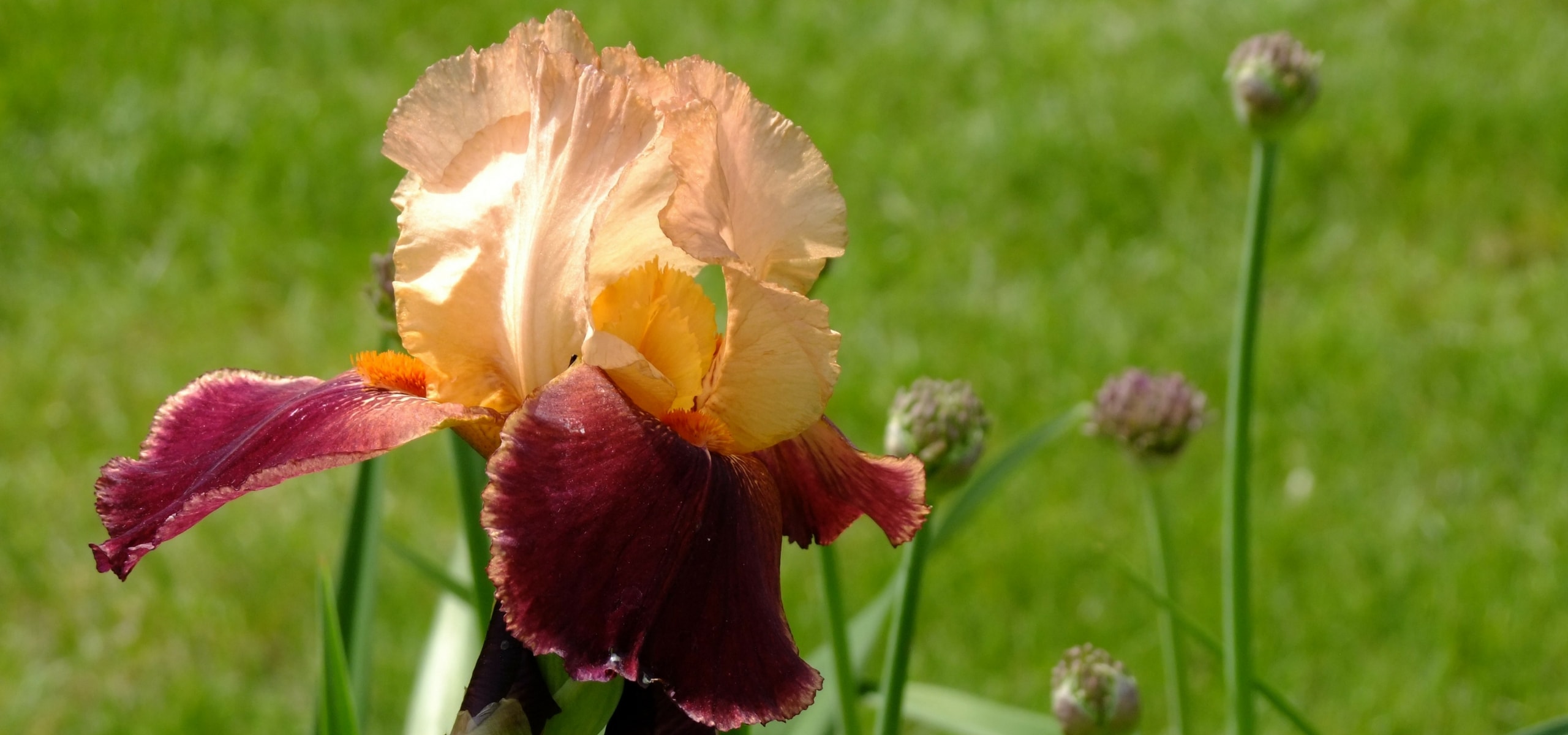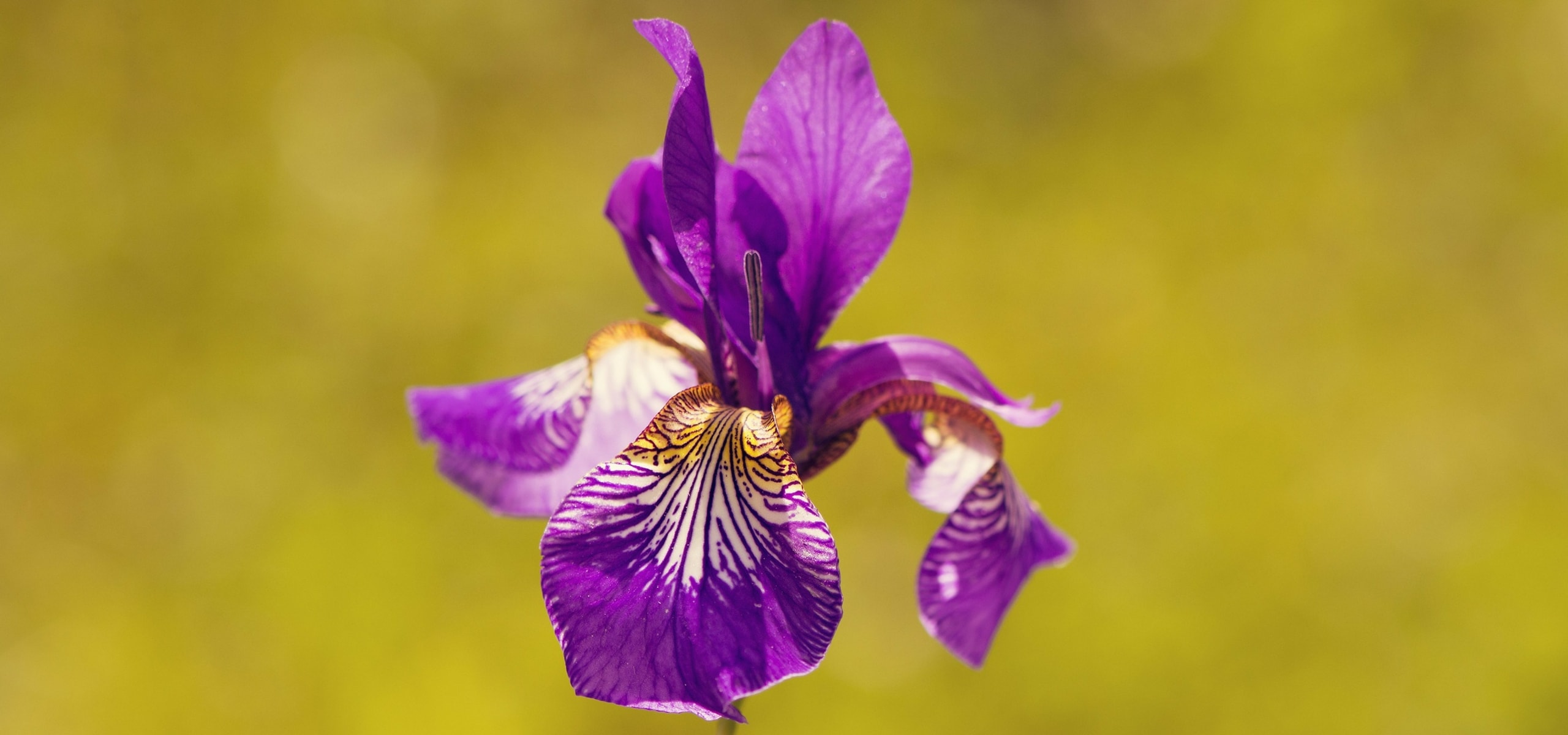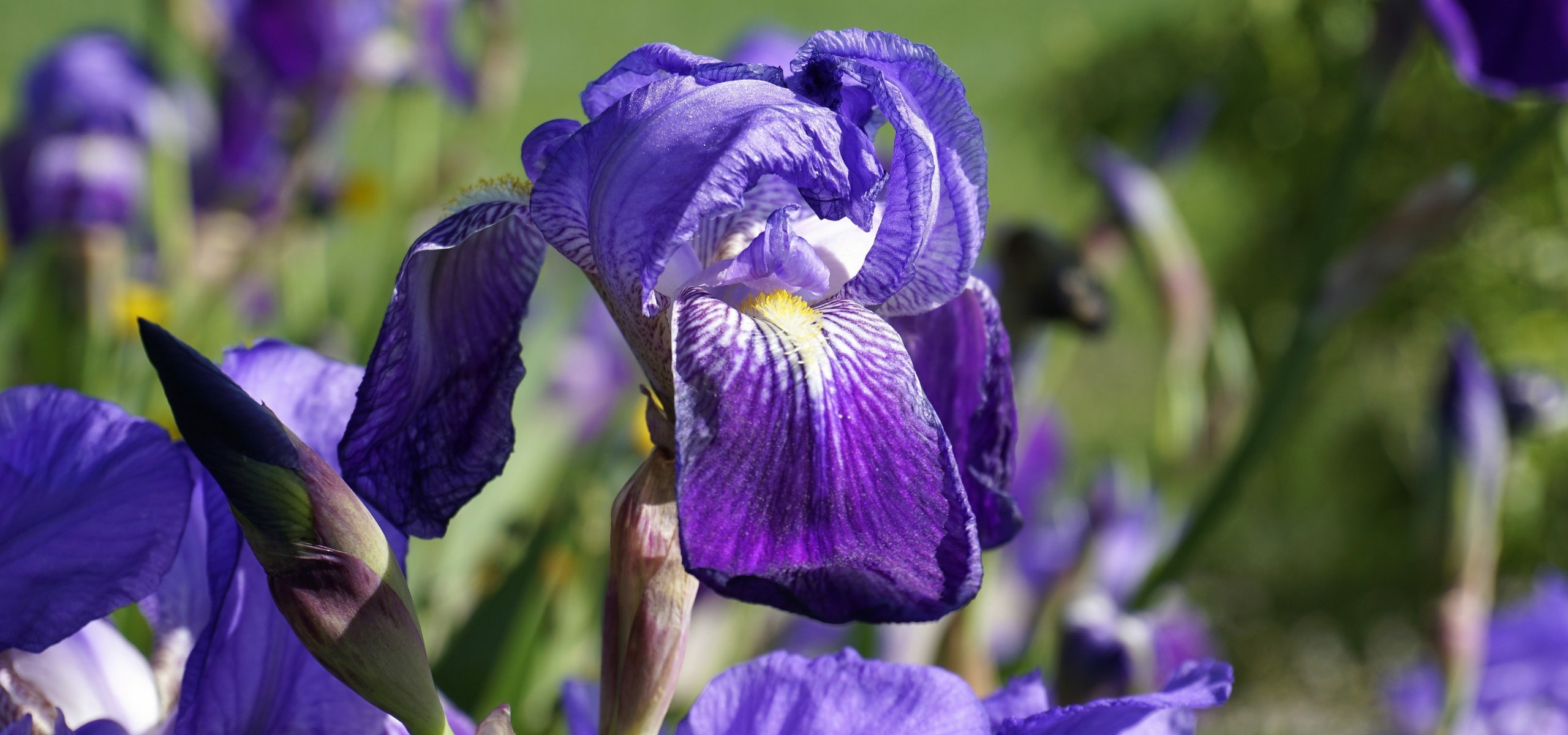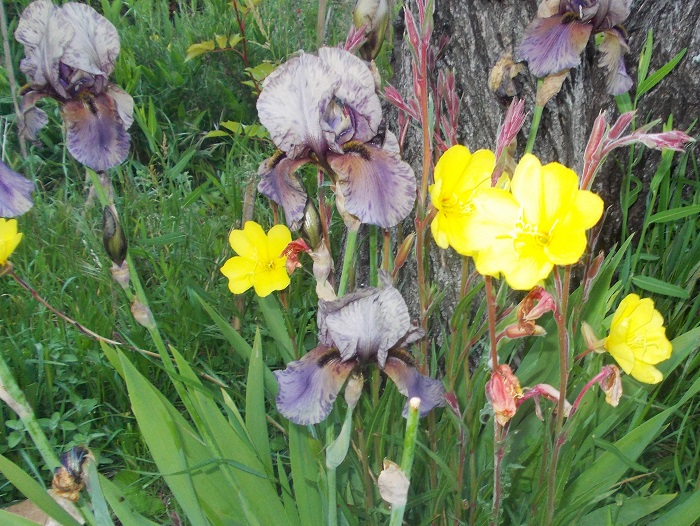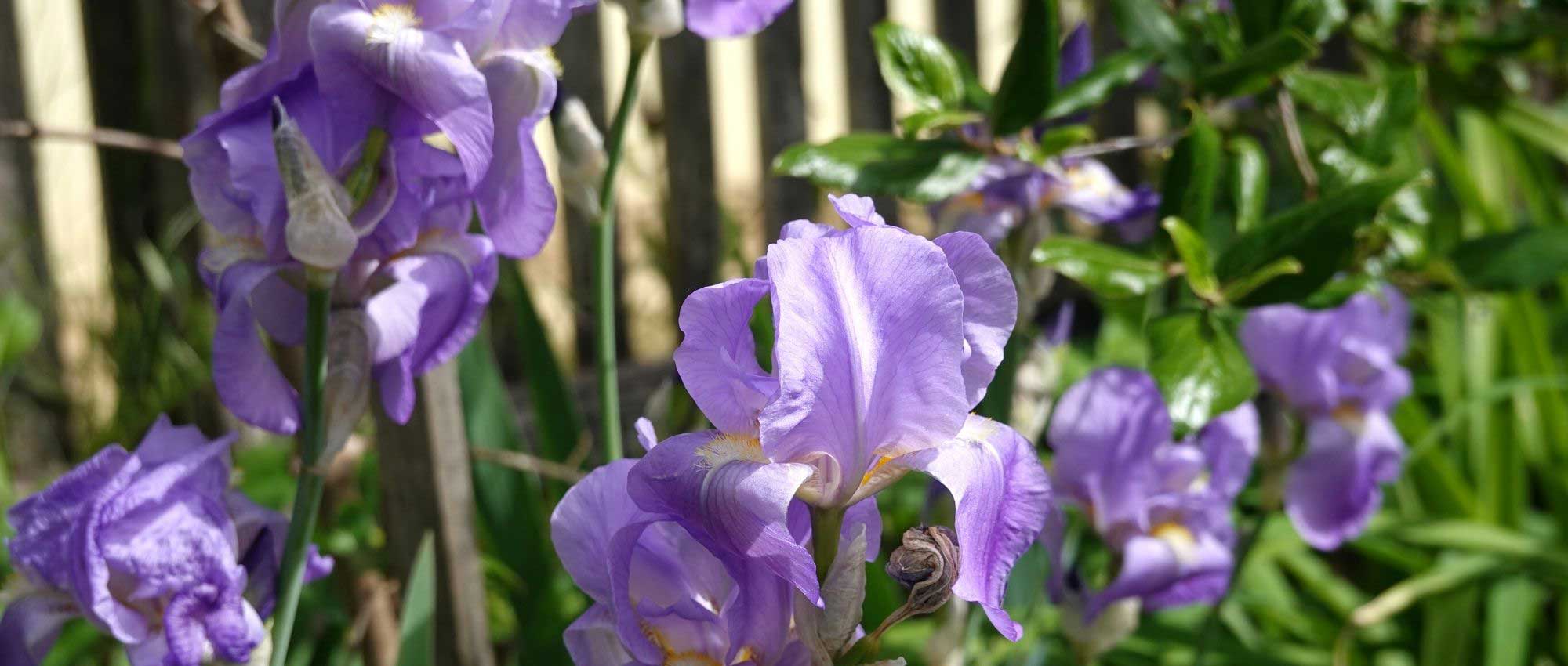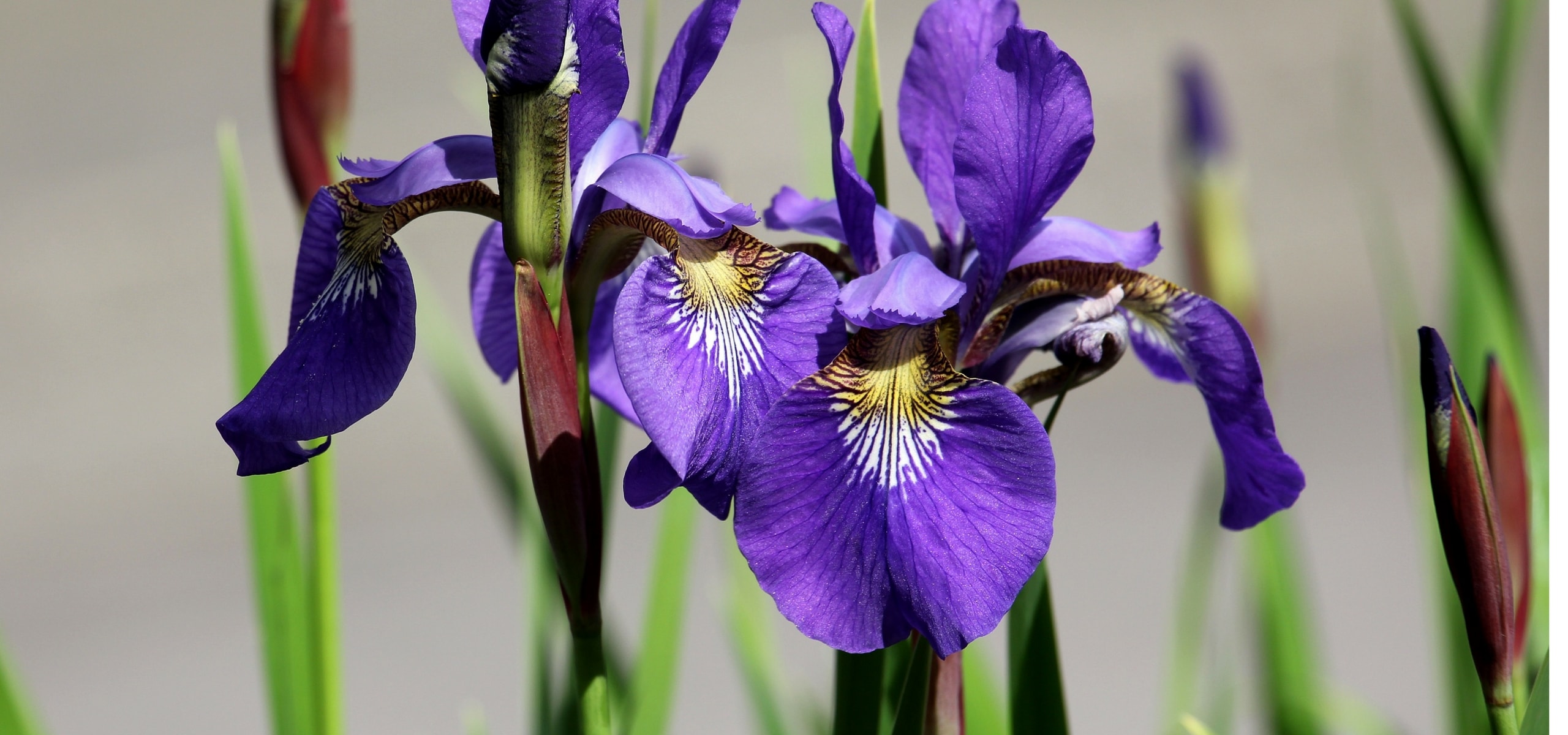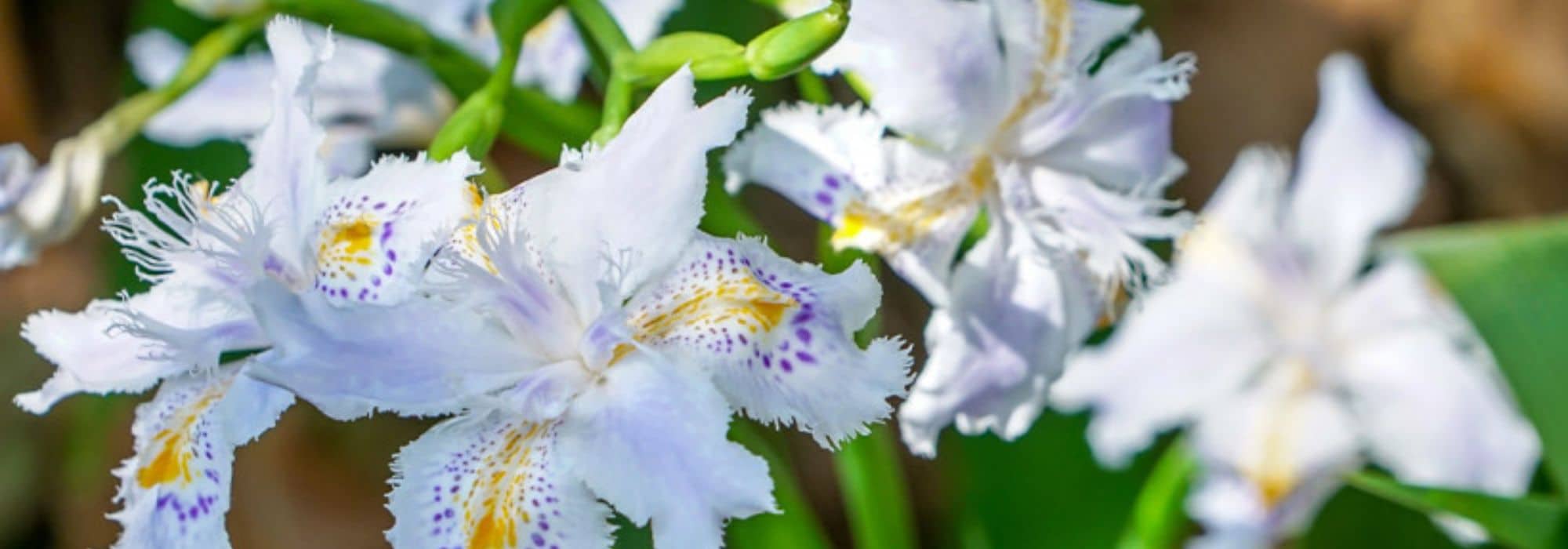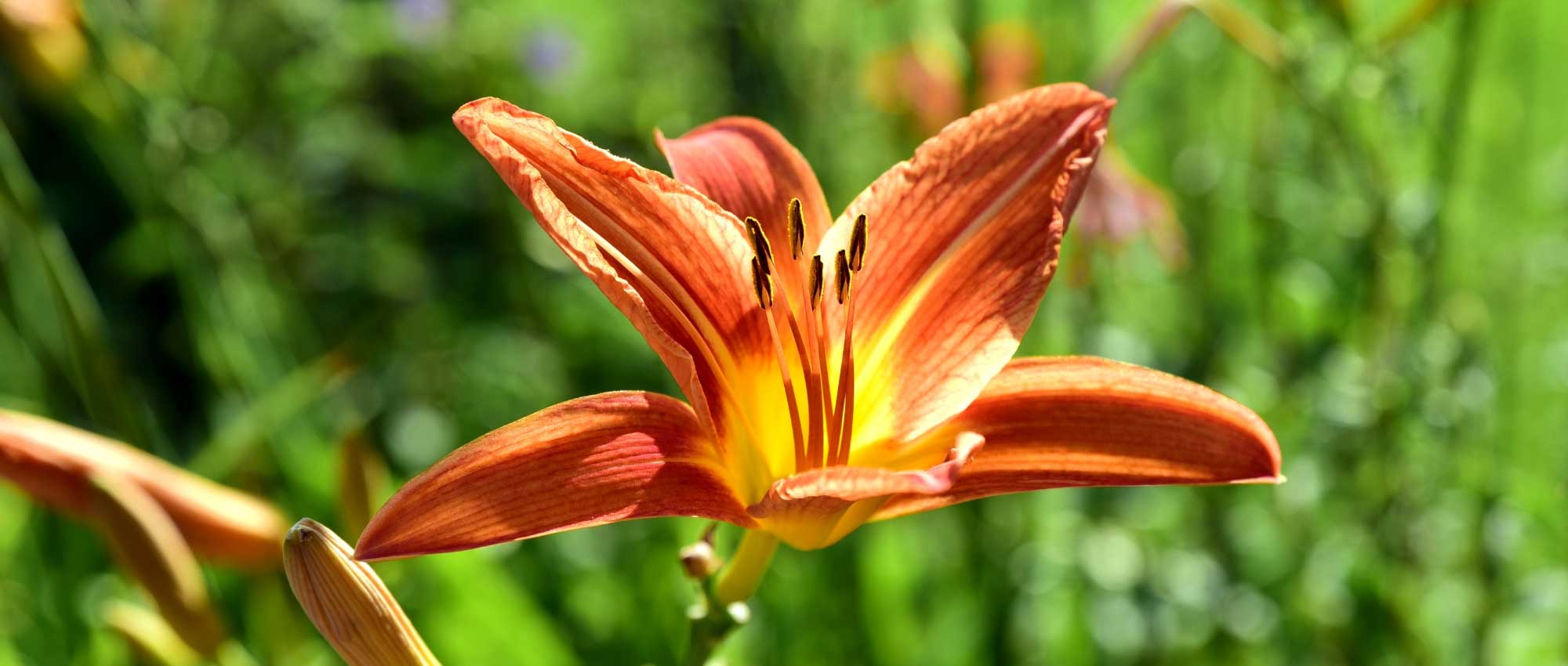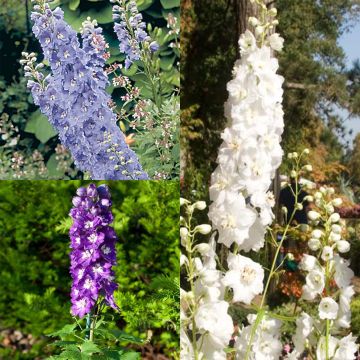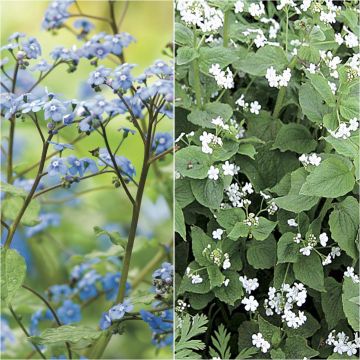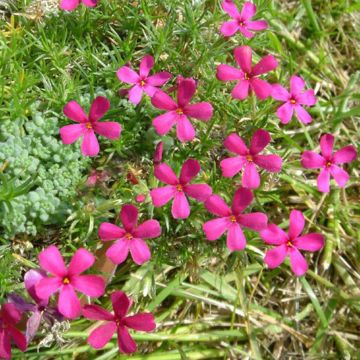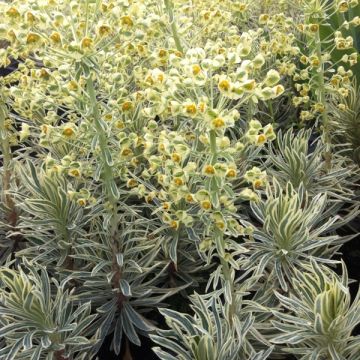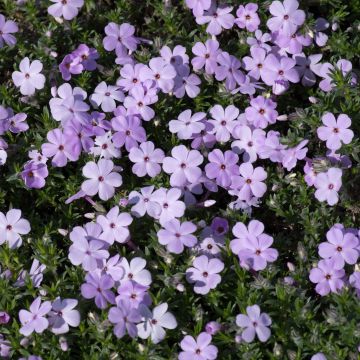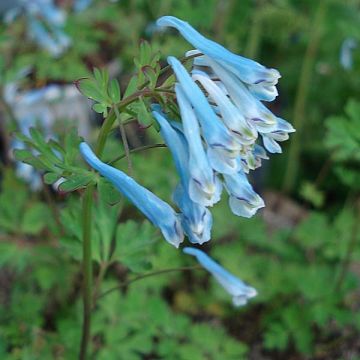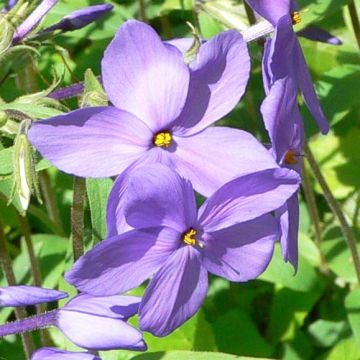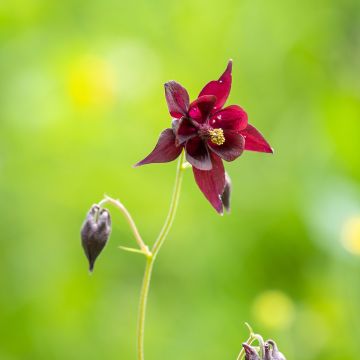Planted en masse in a sunny border, 'Air d’Été' captures the light with an almost painterly grace, its orange tones warming spring scenes. It lends itself elegantly to both naturalistic and structured gardens, planted in light clumps among clumps of purple alliums, fine grasses like Stipa tenuissima, or catmints with bluish spikes that soften its upright habit. It pairs beautifully with other Bearded Irises in contrasting or complementary tones, such as ‘Babbling Brook’ with its lavender hues, vibrant yellow ‘Gold Galore’, or ‘Tabac Blond’ with its coppery reflections, creating a rich and lively harmony. It also thrives in pots on a sunny terrace or balcony. The vegetable garden can be enhanced with a few clumps or borders of irises for cut flowers.
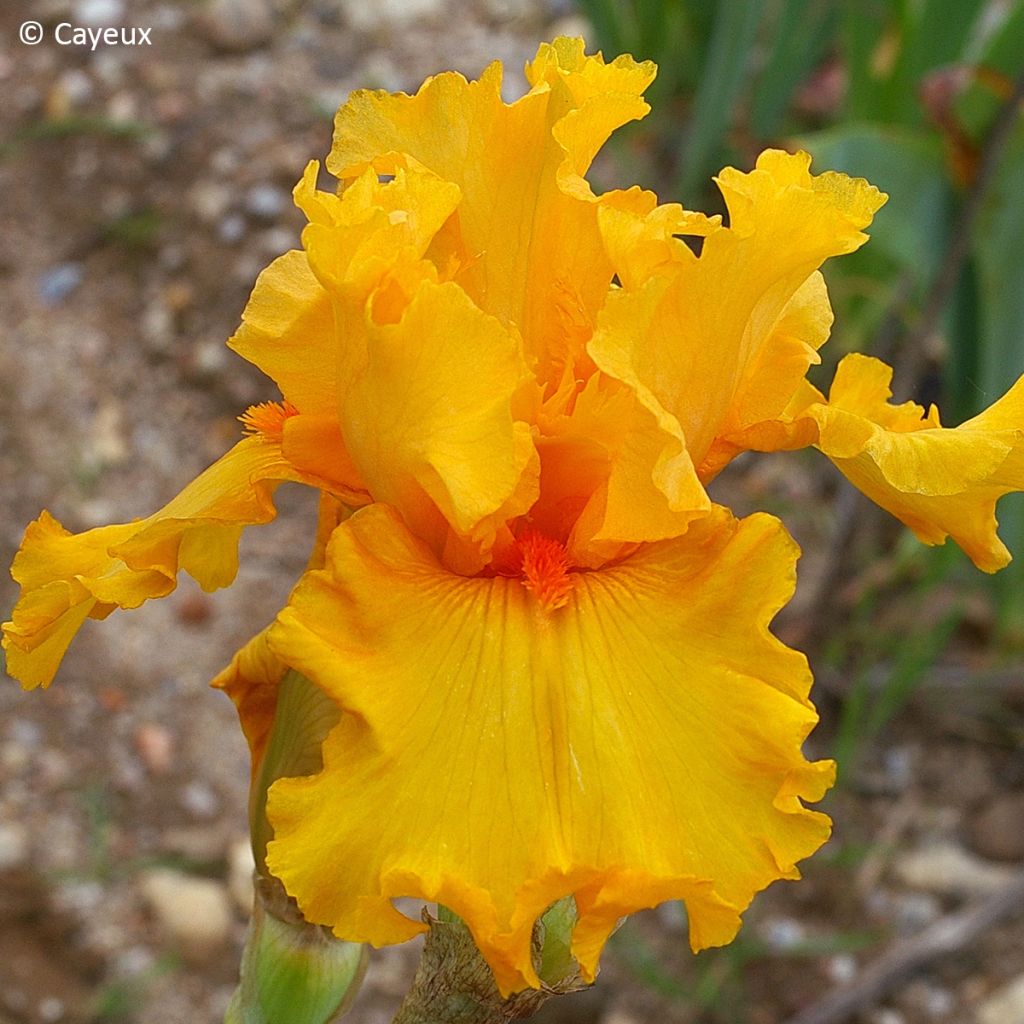

Iris germanica Air d'Été - Tall bearded iris
Iris germanica Air d'Été - Tall bearded iris
Iris germanica Air d'Été
German Iris, Bearded Iris
Special offer!
Receive a €20 voucher for any order over €90 (excluding delivery costs, credit notes, and plastic-free options)!
1- Add your favorite plants to your cart.
2- Once you have reached €90, confirm your order (you can even choose the delivery date!).
3- As soon as your order is shipped, you will receive an email containing your voucher code, valid for 3 months (90 days).
Your voucher is unique and can only be used once, for any order with a minimum value of €20, excluding delivery costs.
Can be combined with other current offers, non-divisible and non-refundable.
Home or relay delivery (depending on size and destination)
Schedule delivery date,
and select date in basket
This plant carries a 12 months recovery warranty
More information
We guarantee the quality of our plants for a full growing cycle, and will replace at our expense any plant that fails to recover under normal climatic and planting conditions.
Would this plant suit my garden?
Set up your Plantfit profile →
Description
Iris germanica ‘Air d’Été’ is a relatively recent variety of Bearded Iris, created by the renowned Cayeux nursery. It produces substantial, bright, luminous light orange flowers, enhanced with mandarin-coloured beards, featuring broad, almost horizontal sepals. The compact flowers are well-proportioned to the medium-sized plant. It fits perfectly in sunny borders or in pots on a terrace. For abundant flowering, it requires full sun and well-drained soil, without excess moisture around the rhizome.
Iris germanica, also known as the Tall Bearded Iris or German Iris, belongs to the Iridaceae family. 'Air d’Été' is a horticultural cultivar developed in 2015 by the Cayeux nursery, famous for its selection of exceptional irises. It is one of many cultivars bred over centuries, with a debated origin linked to the chromosome count of its potential ancestors. What is certain is that Bearded Irises have European origins. These are sun-loving plants that thrive in chalky soils, with rhizomes that need to "bake" in summer to flower. A minimum of six hours of sunlight per day is generally required. Iris 'Air d’Été' stands out for its compact, well-balanced flowers, in pastel orange tones, with wide, nearly horizontal sepals and mandarin-coloured beards. The flowers are moderately sized yet particularly refined, with a thick texture, borne on sturdy stems carrying up to seven buds each. The habit is upright, growth is moderate, and the plant reaches around 80 cm in height in the ground, with a spread of 30 to 50 cm. It is a rhizomatous perennial that develops in elegantly upright clumps from spring, with foliage disappearing in winter. The clump will spread indefinitely over time, with the central rhizomes thinning out in favour of the outer ones. The blue-green leaves are sword-shaped, growing up to 60 cm long. The flower stems are rigid and sparsely branched; the root system consists of fleshy rhizomes that ensure both vegetative reproduction and nutrient storage. Flowering occurs between May and June. Iris rhizomes have long been used in perfumery to produce orris, a precious essential oil.
Flowering
Foliage
Plant habit
Botanical data
Iris
germanica
Air d'Été
Iridaceae
German Iris, Bearded Iris
Cultivar or hybrid
Planting and care
Do you have a sunny spot, sheltered from the wind, warm and rather dry in summer?
This is the ideal location for planting tall irises such as 'Air d'Été'! They can be grown almost everywhere, as they are hardy and do not need winter protection. Well-drained soil is perfect, even if it is rather dry. Iris germanica require chalky soil: amend your soil with lime if it tends to be acidic. Soil that is too damp encourages rhizome rot. Plant from July to September. This gives the rhizomes enough time to grow sufficiently before lifting, then to develop new roots before winter. They should be planted as soon as purchased for the best results. Plan to divide irises every 4 years or so to give them fresh soil. They have vigorous growth and need space to develop and flower well. Plant with spacing suited to the size and vigour of the variety: about 34-50 cm for tall varieties (5 to 10 young plants per square metre). In a monochrome planting, the rhizomes are planted in a staggered pattern. To create a colour mix, it is advisable for the overall aesthetics of the iris bed to plant them in groups of several young plants of the same variety. Always take into account the direction of growth of the rhizomes by arranging them in a star shape, with buds and leaves facing outwards, and spacing them well from other varieties so they have room to develop.
Planting
Dig a hole wide and deep enough. Make a large conical mound of soil in it on which to place the rhizomes with the roots spread out. Cover the roots. It is important that the rhizome is left just below the soil surface. It should not be planted in a hollow (risk of rot), so allow for the soil to settle and the iris to sink. In clay or damp ground, the rhizome should even be raised on a slight mound, a few centimetres high. To help the soil cling to the roots, lightly firm the soil and water generously immediately after planting. Water if needed 2-3 times until established.
Care:
Keep the soil free of weeds by shallow hoeing, taking care not to damage the rhizomes or roots. Weeds shade the irises, retain moisture (leading to rot) and attract slugs. Similarly, cut back dry leaves. If they are diseased (reddish-edged spots from heterosporiosis), burn them. Remove spent flowers.
Planting period
Intended location
Care
Planting & care advice
This item has not been reviewed yet - be the first to leave a review about it.
Similar products
Haven't found what you were looking for?
Hardiness is the lowest winter temperature a plant can endure without suffering serious damage or even dying. However, hardiness is affected by location (a sheltered area, such as a patio), protection (winter cover) and soil type (hardiness is improved by well-drained soil).

Photo Sharing Terms & Conditions
In order to encourage gardeners to interact and share their experiences, Promesse de fleurs offers various media enabling content to be uploaded onto its Site - in particular via the ‘Photo sharing’ module.
The User agrees to refrain from:
- Posting any content that is illegal, prejudicial, insulting, racist, inciteful to hatred, revisionist, contrary to public decency, that infringes on privacy or on the privacy rights of third parties, in particular the publicity rights of persons and goods, intellectual property rights, or the right to privacy.
- Submitting content on behalf of a third party;
- Impersonate the identity of a third party and/or publish any personal information about a third party;
In general, the User undertakes to refrain from any unethical behaviour.
All Content (in particular text, comments, files, images, photos, videos, creative works, etc.), which may be subject to property or intellectual property rights, image or other private rights, shall remain the property of the User, subject to the limited rights granted by the terms of the licence granted by Promesse de fleurs as stated below. Users are at liberty to publish or not to publish such Content on the Site, notably via the ‘Photo Sharing’ facility, and accept that this Content shall be made public and freely accessible, notably on the Internet.
Users further acknowledge, undertake to have ,and guarantee that they hold all necessary rights and permissions to publish such material on the Site, in particular with regard to the legislation in force pertaining to any privacy, property, intellectual property, image, or contractual rights, or rights of any other nature. By publishing such Content on the Site, Users acknowledge accepting full liability as publishers of the Content within the meaning of the law, and grant Promesse de fleurs, free of charge, an inclusive, worldwide licence for the said Content for the entire duration of its publication, including all reproduction, representation, up/downloading, displaying, performing, transmission, and storage rights.
Users also grant permission for their name to be linked to the Content and accept that this link may not always be made available.
By engaging in posting material, Users consent to their Content becoming automatically accessible on the Internet, in particular on other sites and/or blogs and/or web pages of the Promesse de fleurs site, including in particular social pages and the Promesse de fleurs catalogue.
Users may secure the removal of entrusted content free of charge by issuing a simple request via our contact form.
The flowering period indicated on our website applies to countries and regions located in USDA zone 8 (France, the United Kingdom, Ireland, the Netherlands, etc.)
It will vary according to where you live:
- In zones 9 to 10 (Italy, Spain, Greece, etc.), flowering will occur about 2 to 4 weeks earlier.
- In zones 6 to 7 (Germany, Poland, Slovenia, and lower mountainous regions), flowering will be delayed by 2 to 3 weeks.
- In zone 5 (Central Europe, Scandinavia), blooming will be delayed by 3 to 5 weeks.
In temperate climates, pruning of spring-flowering shrubs (forsythia, spireas, etc.) should be done just after flowering.
Pruning of summer-flowering shrubs (Indian Lilac, Perovskia, etc.) can be done in winter or spring.
In cold regions as well as with frost-sensitive plants, avoid pruning too early when severe frosts may still occur.
The planting period indicated on our website applies to countries and regions located in USDA zone 8 (France, United Kingdom, Ireland, Netherlands).
It will vary according to where you live:
- In Mediterranean zones (Marseille, Madrid, Milan, etc.), autumn and winter are the best planting periods.
- In continental zones (Strasbourg, Munich, Vienna, etc.), delay planting by 2 to 3 weeks in spring and bring it forward by 2 to 4 weeks in autumn.
- In mountainous regions (the Alps, Pyrenees, Carpathians, etc.), it is best to plant in late spring (May-June) or late summer (August-September).
The harvesting period indicated on our website applies to countries and regions in USDA zone 8 (France, England, Ireland, the Netherlands).
In colder areas (Scandinavia, Poland, Austria...) fruit and vegetable harvests are likely to be delayed by 3-4 weeks.
In warmer areas (Italy, Spain, Greece, etc.), harvesting will probably take place earlier, depending on weather conditions.
The sowing periods indicated on our website apply to countries and regions within USDA Zone 8 (France, UK, Ireland, Netherlands).
In colder areas (Scandinavia, Poland, Austria...), delay any outdoor sowing by 3-4 weeks, or sow under glass.
In warmer climes (Italy, Spain, Greece, etc.), bring outdoor sowing forward by a few weeks.






























